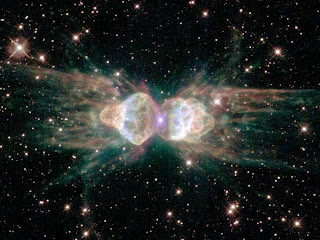An interesting book entitled, "Human
Accomplishment" by Charles Murray has attempted to select the most
important figures in the arts and sciences from 800 BC to 1950 AD. A
total of 4002 significant figures were culled from a large number of
authoritative sources covering astronomy, physics, mathematics,
chemistry, biology, earth sciences, technology, the various arts, and
philosophy. Murray used statistical analysis as a guide to avoid
selections based on nationality, gender, race, or popularity. I think he
did a very credible job in his selection process. The top twenty people
were ranked within each class. For example, the two most important
figures in physics were Newton and Einstein, in mathematics, Euler and
Newton, and in technology, Watt and Edison.
Of
the 4002 significant figures selected, 124 were astronomers. 204 were
chemists, 85 were in the earth sciences, 218 were physicists and 101
were mathematicians. As for the arts, there were 522 significant
musicians and 1128 significant authors.
Here are his top twenty astronomers in rank order with accomplishments:
1.GALILEO Galilei (1564-1642)
Resolved
the stars in the Milky Way, discovered sunspots and measured the Sun’s
rotation, observed Venus phases, discovered four moons of Jupiter,
observed lunar features and measured lunar wobble, supported the
Copernican system of planetary movement via his observations.
2. KEPLER Johannes (1571 – 1630)
Using
Brahe’s precise data derived his three laws of planetary elliptical
motion, provided explanation of optical image formation through small
apertures, the first enunciation of the inverse square law for intensity
of illumination.
3. HERSCHEL William (1738 – 1822)
The
discoverer of Uranus and several satellites of Saturn and Uranus,
discovered that some double stars orbit each other, discovered infrared
radiation, attempted to map the Milky Way’s shape, known for building
state-of-the-art telescopes.
4. LAPLACE Pierre-Simon (1749 – 1827)
Postulated
the solar system evolved from a large flattened cloud of gas, published
differential equations describing planetary orbits and tides,
determined the masses of Jupiter, Saturn and Uranus, applied probability
theory to errors in observations.
5. COPERNICUS Nicolaus (1473 – 1543)
Proposed Earth orbited the Sun via De Revolutionibus Orbium Coelestium
contradicting the long held Ptolomic belief that the Sun orbited the
Earth thereby laying the groundwork for Galileo and Kepler.
6. PTOLOMY Claudius (2nd century AD)
Through his Almagest
constructed an accurate geocentric model of the solar system consisting
of a series of deferents and epicycles that was followed for 15
centuries until Copernicus.
7. BRAHE Tycho (1546 – 1601)
Chronicled
supernova of 1572 and discovered it had no diurnal parallax proving it
lay beyond the Moon, plotted the motion of the comet of 1577, accurately
plotted motions of planets used by Kepler after his death.
8, HALLEY Edmond (1656 – 1742)
Astronomer Royal, discovered Omega Centauri, paid for publishing Newton’s Principia,
using Newton’ gravitational law predicted the comet of 1682 would
return in 76 years, invented the idea of using transits of Mercury and
Venus to determine distance to the Sun.
9, CASSINI Giovanni (1625 – 1712)
Measured
Mars and Jupiter rotation periods, first scientific records of zodiacal
light, discovered the Cassini division, and investigated atmospheric
refraction.
10, HIPPARCHUS of Nicaea(190 - 120 BC)
Founder
of systematic observational astronomy, discovered the precession of the
equinoxes, confirmed Eratosthenes value for the obliquity of the
ecliptic, completed a catalog of 1080 stars.
11, BAADE Wilhelm (1893 – 1960)
Proposed
supernova could produce cosmic rays and neutron stars, first resolved
stars in Andromeda galaxy, defined Population I and II stars and two
kinds of Cepheid variables.
12. HUBBLE Edwin (1889 – 1953)
Discovered
the Hubble classification of galaxies, using Cepheid variables in M31
and M33 calculated their distances, showed that galaxy distribution was
cosmologically uniform, showed galaxies were moving away from us at
speeds proportional to their distance (Hubble’s Law).
13. BESSEL Friedrich (1784 – 1846)
Father
of modern astrometry, published first accurate stellar parallax,
discovered orbital deflections of Sirius and Procyon from unseen white
dwarfs.
14, HUGGINS Sir William (1824 – 1910)
Invented
the stellar spectroscope, comparing laboratory and stellar spectra
demonstrated that the Orion nebula's pure emission spectra indicated its
gaseous nature while Andromeda galaxy had continuous spectra, imaged
solar prominences in H Alpha light.
15, HALE George (1868 – 1938)
The
first astrophysicist, invented the spectroheliograph allowing
photography of solar prominences in daylight, discovered magnetic fields
in sunspots, planned and completed the 200-inch Mt. Palomar telescope.
16, EDDINGTON Sir Arthur (1882 – 1944)
An
astrophysicist, discovered the stellar mass-luminosity relationship,
explained Cepheid variable pulsations and very high densities of white
dwarfs, formulated the Eddington Limit which relates star’s maximum luminosity to its gravitational force.
17. HERTZSPRUNG Ejnar (1873 – 1967)
Studied
stellar proper motions and motions of binary stars, using photography
studied stellar brightness, compared stellar color ratios, plotted
color-magnitude diagram for the Hyades cluster, which evolved to the Hertzsprung-Russell diagram.
18. OLBERS Heinrich (1758 – 1840)
Discovered several comets, searched for missing planet between Mars and Jupiter forecasted by Bode’s Law and discovered Pallas and Vesta suggesting these were fragments of the missing planet, formulated Olber’s Paradox.
19, KUIPER Gerard (1905 – 73)
First planetary scientist, spectroscopically detected CH4 on Titan and CO2 on Mars, identified the comet-like debris of Kuiper’s Belt at the edge of the solar system.
20. HEVELIUS Johannes (1611 – 87)
An
accomplished instrument maker, introduced the vernier scale for
accuracy, developed a catalog of star positions and a celestial atlas,
discovered four comets and was the first to observe a transit of
Mercury.
Although
one could quibble with the rank ordering of these great astronomers, it
seems difficult to dislodge any from the list with anybody else. I
recommend this book to anyone interested in the arts and sciences.











